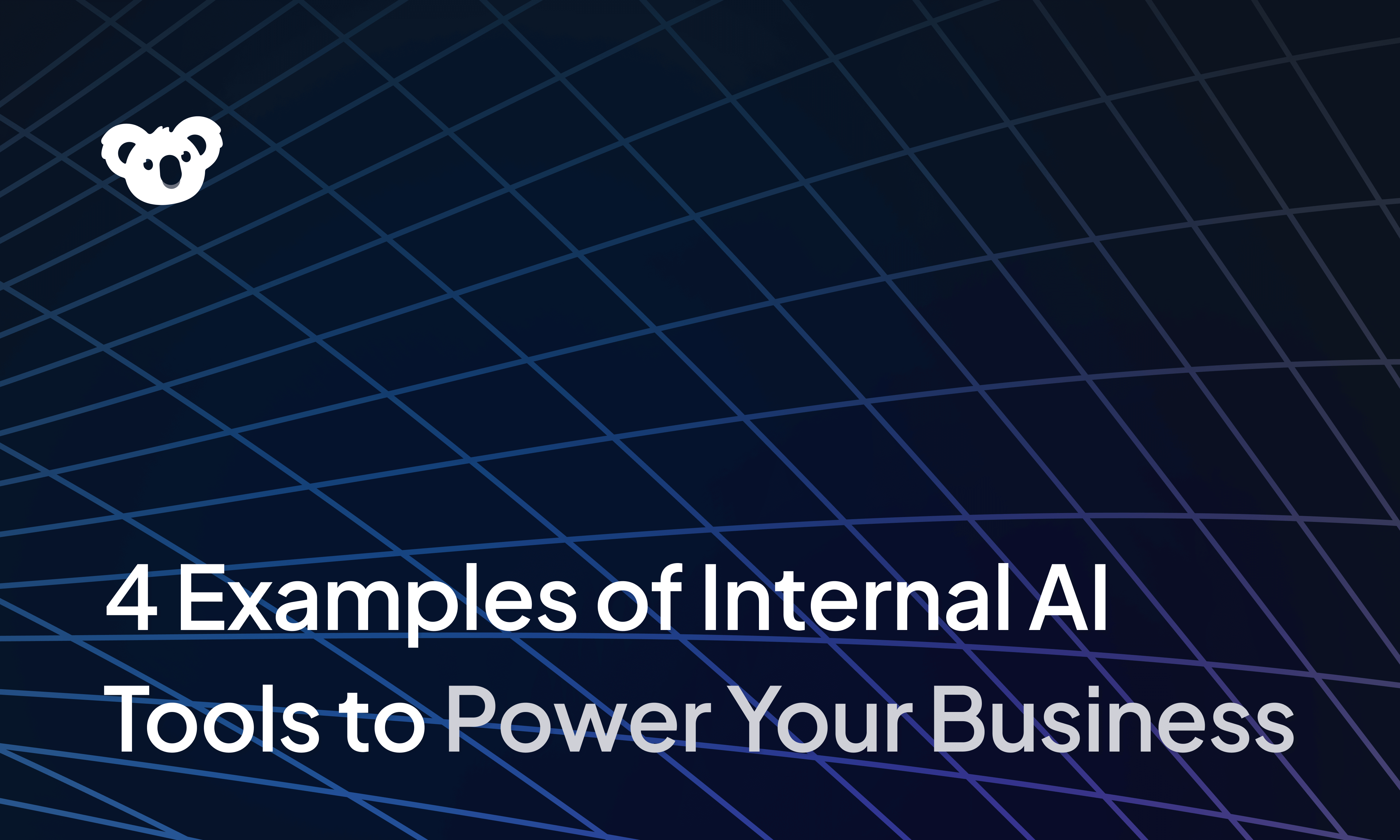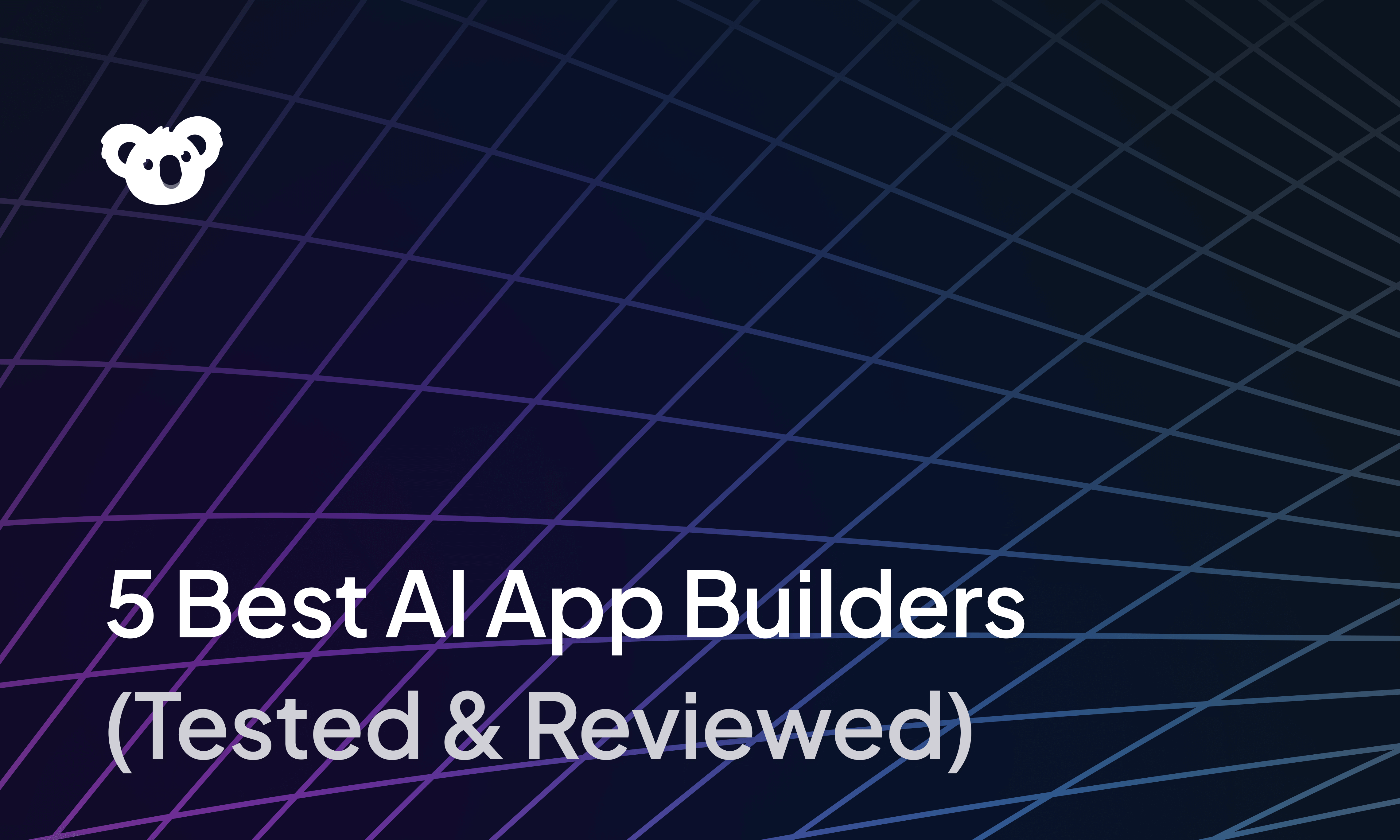


SAP runs core business functions like finance, operations, and supply chain. It’s reliable, but SAP integration is often slow and complex.
New platforms like Superblocks are changing that. Teams can now build secure UIs and workflows that use SAP data, without relying on SAP specialists. These tools connect through APIs and expose SAP processes in user-friendly apps.
In this article, we’ll cover:
- What SAP integration means
- Key types of SAP integrations
- How Superblocks modernizes SAP integration
Let's start with the basics.
What is SAP integration?
SAP integration connects SAP systems with other software tools to exchange data and trigger actions.
Few businesses rely on SAP alone. Most teams use CRMs like Salesforce, e-commerce platforms like Shopify, cloud data warehouses, or legacy internal systems. Without integration, these tools stay siloed.
SAP integration helps automate workflows and keep data consistent across the stack. Common integration targets include:
- CRMs to share customer and order info
- Data warehouses or BI tools to combine SAP data with other data for analytics
- Supplier or partner systems for automated order processing or data exchange
- Third-party APIs and services to handle tax calculation or payment processing
4 common types of SAP integration
SAP integrations differ based on which systems are involved and what the integration is meant to achieve.
Most use cases fall into one of four categories:
- SAP application integration: Connects SAP applications to other SAP or non-SAP apps to support cross-system workflows. For example, syncing SAP with an HR system or an order management tool.
- SAP data integration: Focuses on syncing and consolidating records between SAP and other data stores into a unified view. A common use case is copying financial or purchasing data from SAP into Snowflake or BigQuery for reporting.
- SAP system integration: Connects SAP with other internal systems, particularly older or on-premises infrastructure. Many companies still run SAP ECC or use hybrid setups that rely on local databases or custom tools. Middleware or agents often translate between SAP protocols and modern APIs.
- SAP cloud integration: Syncs SAP with SaaS tools or cloud-native platforms. This may include integrating SAP with a cloud CRM or financial app, for instance. These setups often use REST or OData APIs.
What is the SAP Integration Suite?
The SAP Integration Suite is SAP’s cloud-based integration platform. It connects applications, automates workflows, and moves data across on-premise and cloud environments. It supports both SAP and non-SAP systems.
The suite includes tools for API management, event handling, application integration, and B2B message exchange. It excels at SAP-to-SAP integration, with prebuilt connectors for systems like Salesforce, Ariba, and SuccessFactors. It also meets enterprise-grade expectations, offering a 99.95% uptime SLA and built-in security.
However, it has limitations:
- Setup is slow for fast-moving teams
- Lacks built-in UI or form-building tools
- Requires SAP-specific knowledge
You can move data and trigger processes, but you cannot easily create dashboards or forms. For that, you’ll need tools like SAP Fiori or a custom front end.
Read more: 8 steps to building a digital integration strategy in 2025
Why is SAP integration so challenging?
SAP is harder to integrate than most modern applications.
The complexity comes from:
- Legacy and proprietary protocols: Many SAP systems still use IDocs, BAPIs, and RFCs. These formats require specialized handling and don’t work with common standards like REST or JSON out of the box.
- Data silos and access permissions: SAP systems are often tightly secured and siloed by design. Integrating SAP is not as simple as calling a public API. It involves navigating SAP’s permissions, roles, and data governance to avoid violating controls. That introduces overhead at every step.
- Compliance risk: SAP often holds financial, HR, and supply chain data. Integrations must meet strict compliance and audit standards. This adds review cycles and slows development.
- Limited developer capacity: SAP integration requires niche roles like ABAP developers or PI/Basis specialists. These teams often face backlogs. Business users may wait months for even simple integrations.
How does Superblocks modernize SAP integration?
Superblocks modernizes SAP integration by letting teams quickly build apps and workflows on SAP data without ABAP or middleware. It simplifies the functionalities SAP doesn’t handle well, like dashboards, approval flows, admin panels. It also helps with workflows that combine SAP data with other systems.
What it solves:
- No UI bottlenecks: Instead of building in SAP GUI or learning Fiori, teams can create context-aware apps using Superblocks’ AI agent, then refine them visually or with code.
- Broad integration: Superblocks connects to both SAP and non-SAP systems in the same app or workflow. You can pull purchasing data from SAP and budget targets from Snowflake, display both in a dashboard, and trigger follow-up actions all in one place.
- Centralized governance: You can manage access with RBAC, configure auth using SSO, review changes via Git, and log all actions.
- Hybrid connectivity: Use the on-prem agent to access SAP environments behind firewalls without exposing them to the public internet.
- Improved dev capacity: Supports familiar APIs and standard programming languages like JavaScript and Python. Teams don’t need SAP specialists.
That said, while you won’t need to work directly with SAP internals, you still need some familiarity with SAP APIs and data structures. Superblocks abstracts the front-end and orchestration layer, but it assumes your SAP environment exposes the necessary services.
Real-world use cases of Superblocks with SAP
To make this more concrete, here are a few common scenarios teams use Superblocks to extend the value of SAP:
- Procurement dashboards: Building real-time dashboards that surface purchasing data directly from SAP. Instead of running reports in SAP GUI, users get a clean, searchable view of open POs, vendor performance, and delivery status, all updated live and accessible without needing SAP access.
- Finance automation: Creating approval workflows that interact with SAP but live outside of it. For example, a finance manager can approve or reject invoices from a custom Superblocks app. The action triggers an update in SAP, without opening the ERP interface.
- Vendor onboarding: Building form-based onboarding tools. Teams collect vendor data, trigger approval flows, and write the finalized record into SAP, without providing external users with direct access to SAP or relying on email attachments.
- Analytics & reporting dashboards: Combining SAP data with Snowflake, BigQuery, or any other source to build reporting tools that deliver more context. Superblocks pulls from both systems in one query, so teams can compare actuals, forecasts, support data, and more in a single dashboard.
Comparing SAP integration methods
There are multiple ways to integrate SAP with other systems, each with pros and cons.
Let’s compare some of the common methods:
Tips for choosing the right SAP integration approach
Choosing the right integration method depends on your goals, systems, and team capabilities.
Here are some tips and considerations:
Use custom code if:
- You need full control over data transformation or integration logic
- Your SAP APIs are heavily customized
- You have strong in-house SAP and backend engineering resources
Custom code is most effective for tightly scoped, high-complexity integrations. It’s also the hardest to maintain over time.
Use middleware (Boomi, MuleSoft) if:
- You’re integrating many systems across the enterprise
- You need reusable API layers or advanced transformation pipelines
- You already use tools like Boomi or MuleSoft
Middleware offers broad connectivity and structure, but often at the cost of agility and developer speed.
Use SAP Integration Suite if:
- You’re mostly connecting SAP to other SAP products
- You need SAP-native support, prebuilt flows, and SLAs
- You want access to prebuilt flows and managed adapters
It’s best for backend system integrations, but has a steeper learning curve and slower setup time.
Use Superblocks if:
- You’re building UI workflows on SAP data
- You’re integrating SAP with non-SAP systems like Snowflake, CRMs, or internal tools
- You want to enable developers or analysts to build without waiting on SAP specialists
Superblocks complements backend tools by handling front-end needs, automation, and non-SAP connections.
How the methods compare on cost, speed, and UX
Beyond technical fit, teams often evaluate integration options based on:
- Cost: Custom code has no licensing cost, but requires high developer time. SAP Integration Suite and enterprise middleware have high upfront and recurring fees. Superblocks and other low-code tools reduce cost by combining integration, automation, and UI development in one platform.
- Time to deploy: Low-code is the fastest option. Middleware and SAP-native tools take longer to configure. Custom code is the slowest, especially for complex integrations.
- Security: All approaches can be secure when implemented correctly. SAP-native platforms come with built-in compliance. Enterprise middleware and low-code platforms usually support RBAC, authentication, and audit logs.
- Dev effort: Custom code requires the most effort and SAP expertise. SAP-native and middleware tools also need dedicated specialists. Low-code platforms reduce dev time and allow generalist developers to contribute.
- User experience: Only low-code tools support direct UI development. Middleware and custom code focus on backend data flows and need extra tools to build dashboards or user-facing apps.
How Superblocks meets SAP governance standards
Any solution extending or integrating SAP must be tightly controlled, fully auditable, and built to support enterprise risk standards.
We built Superblocks with these concerns in mind. That’s why we offer:
- Role-Based Access Control (RBAC): Admins assign precise permissions for viewing, editing, and deploying apps. Teams can segment access by role, department, or environment.
- Single Sign-On (SSO): Superblocks integrates with Okta, Azure AD, and other identity providers so users can sign in with enterprise credentials.
- Audit logging: Superblocks logs every deployment, change, and user action. You get a full activity trail to meet audit and compliance requirements.
- Secrets management: Superblocks stores credentials securely. It hides SAP passwords, tokens, and keys from code and end users.
- On-premise agent for SAP connectivity: You can keep SAP connection details behind your firewall. Superblocks connects securely without exposing systems to the cloud.
- Secure development process: Devs can use version control and environment-based deployment to review and test changes before pushing to production.
- Observability and monitoring: You can add monitoring hooks or connect Superblocks to tools like Datadog. Get alerts when workflows fail or systems disconnect.
When is Superblocks the better choice?
Superblocks is not a universal replacement for other SAP integration methods, but there are clear cases where it fits better than traditional SAP development or middleware-heavy solutions.
Here’s when it makes the most sense:
- You want custom UI workflows built on SAP data: Superblocks simplifies the build process with Clark AI, visual editors, and pre-built components.
- You’re integrating SAP with non-SAP systems: If the process spans multiple tools, Superblocks connects them in one place without custom middleware.
- Your team lacks dedicated SAP developers: Developers can use JavaScript, Python, and visual logic instead of ABAP or PI. This broadens your team’s ability to build and maintain apps.
- You are avoiding over-engineering for small gaps: Use Superblocks to automate steps or fill process gaps without launching a major IT project.
How Superblocks helps you build on SAP
Superblocks modernizes SAP integration by making it easier to build custom workflows and apps on top of SAP. It doesn’t replace SAP’s core. You still use SAP’s data and transactions. But it extends SAP’s reach by bringing that data into tools, teams, and workflows across your organization.
In short, Superblocks helps teams ship SAP-connected tools faster at scale and within their security standards.
If you’d like to see it in practice, take a look at our Quickstart Guide, or better yet, try Superblocks for free.
Frequently Asked Questions
What is the best way to build dashboards on SAP data?
Use Superblocks to connect to SAP APIs and combine that data with sources like databases, data lakes, or SaaS APIs.
Can Superblocks replace SAP Fiori apps?
Superblocks complements SAP Fiori by enabling teams to build custom UIs and workflows that integrate SAP data with external systems. It doesn’t replicate Fiori’s native UX standards or certifications, but it adds flexibility when SAP alone isn’t enough.
How does Superblocks handle SAP API security and access control?
Superblocks secures SAP integrations with RBAC, SSO, audit logs, and an optional on-prem agent that keeps data in-network. You control who can access and modify apps.
What is SAP Integration Suite used for?
SAP Integration Suite connects SAP and external systems. It handles APIs, events, and B2B flows, but does not support UI or app development.
Is Superblocks compatible with SAP on-prem systems?
Yes, Superblocks can work with on-premises SAP systems. It provides the On-Premise Agent (OPA) that you can install in your network to connect securely to SAP without exposing it to the internet.
What are common use cases for integrating SAP with other tools?
Common use cases include procurement dashboards, invoice approvals, vendor onboarding, and integrating SAP data with business intelligence (BI) tools.
Can Superblocks pull data from both SAP and Snowflake at once?
Yes. You can query SAP and Snowflake in one workflow and use the results in dashboards, automations, or APIs.
What’s the difference between SAP Integration Suite and low-code tools?
SAP Integration Suite focuses on backend data movement and SAP-to-SAP workflows. Low-code tools focus on building apps, which often includes data integration.
Stay tuned for updates
Get the latest Superblocks news and internal tooling market insights.
You've successfully signed up
Request early access
Step 1 of 2
Request early access
Step 2 of 2
You’ve been added to the waitlist!
Book a demo to skip the waitlist
Thank you for your interest!
A member of our team will be in touch soon to schedule a demo.
Table of Contents



.png)


